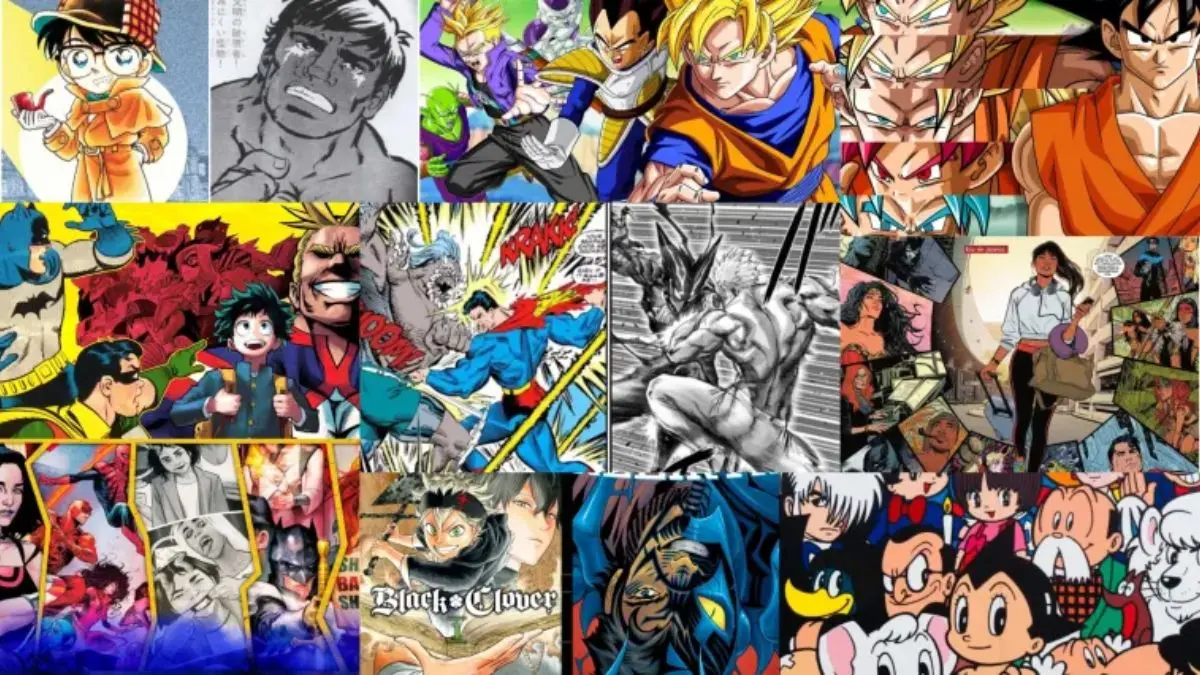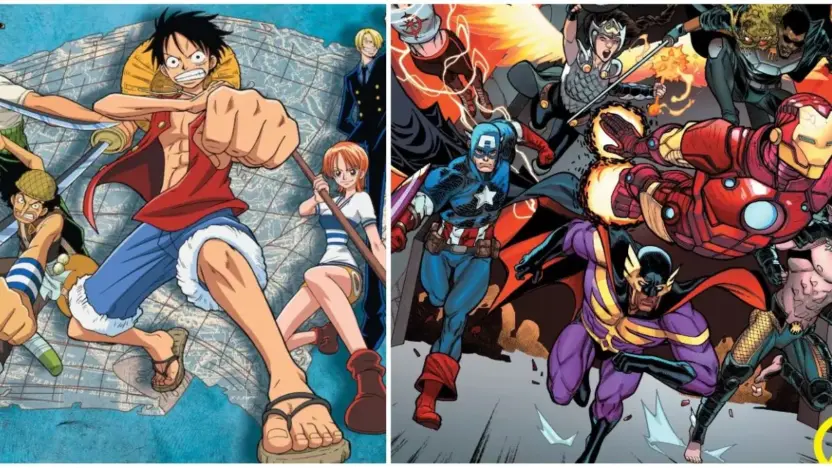Comics, a medium that combines art and narrative to tell stories, vary greatly around the globe. Among the most prominent are manga from Japan and Western comics, primarily from the United States and Europe. Each has developed its own distinctive styles, storytelling techniques, and cultural significance. However, as the world becomes increasingly interconnected, manga and Western comics have begun to influence each other in unprecedented ways. This exchange has not only broadened the thematic and stylistic horizons of both mediums but also fostered a global community of fans and creators alike. This blog “How Manga Has Influenced Western Comics and Vice Versa” aims to explore the depth of Manga and western comics influence on each other. By this blog we will be tracing its historical roots, examining its manifestations in art and storytelling, and contemplating its implications for the future of comics worldwide.
How Manga Has Influenced Western Comics and Vice Versa
History and Evolution of Manga and Western Comics
Manga’s Roots and Rise: The term “manga” traditionally refers to all kinds of cartoons, comic books, and caricatures in Japan. Its modern form took shape in the post-World War II era, heavily influenced by both traditional Japanese art and the occupation forces’ introduction of American comic strips and animation. Osamu Tezuka, often called the “God of Manga,” played a crucial role in defining manga’s contemporary form with his cinematic technique and deep, engaging narratives.
Western Comics’ Journey: Western comics have their origins in the late 19th and early 20th centuries, with newspaper comic strips and later, comic books. The Golden Age of Comic Books began in the 1930s, introducing iconic superheroes like Superman and Batman. This era set the stage for the superhero genre to dominate Western comics, though the medium has since expanded to include a diverse range of genres and styles.
Early Cross-Influences: Initial exchanges between these two comic cultures were sparse, often mediated by the limited availability of translated works. However, soldiers returning from Japan after World War II and the subsequent spread of television and film adaptations of comics contributed to early cross-cultural exposure.

Manga’s Influence on Western Comics
Visual Storytelling: Manga is renowned for its wide range of expressive techniques, such as exaggerated facial expressions and “speed lines” for motion, which have inspired Western comic artists to adopt a more dynamic visual language. The influence of manga has also led to the exploration of more ambitious panel layouts and non-linear storytelling in Western comics, providing readers with a more immersive experience.
Thematic Diversity: Manga’s vast array of genres, from high-action shonen to introspective josei, has encouraged Western comics to explore new themes and audience segments. This diversification has been crucial in attracting a broader readership, including more female readers and those interested in genres beyond the traditional superhero narrative.
Serialized Storytelling: The serialization format common in manga, where stories unfold over weeks and months in magazines, has influenced Western comics’ narrative structures. This approach has allowed for more complex and character-driven stories, as seen in long-running series that have adopted a more serialized storytelling model.
Inspirational Titles: Titles such as “Avatar: The Last Airbender” and “RWBY” showcase the manga influence through their storytelling, character design, and world-building, blending Eastern and Western aesthetic elements to create unique narratives that resonate with a global audience.
Western Influence on Manga
Artistic Fusion: The bold lines, dynamic action sequences, and emphasis on heroism found in Western comics have been integrated into many manga, resulting in a stylistic blend that leverages the strengths of both traditions. This fusion is evident in manga like “Attack on Titan,” where the influence of Western comic aesthetics is combined with traditional manga storytelling to create a globally appealing narrative.
Genre Innovation: Western concepts of science fiction, fantasy, and superhero tales have been absorbed into manga, enriching its genre spectrum. This cross-pollination has led to innovative stories that merge Western genre conventions with manga’s nuanced character development and storytelling techniques.
Technological Advances: The adoption of digital art techniques from Western comics has revolutionized manga production, allowing for more intricate designs and color work. This technological exchange has not only enhanced the visual quality of manga but also streamlined its production process, making it more accessible to creators worldwide.
Iconic Influences: Manga series such as “JoJo’s Bizarre Adventure” and “One Punch Man” demonstrate the influence of Western comic heroes and storytelling, incorporating exaggerated heroics and moral dilemmas that echo the themes of Western comics while maintaining a distinctly manga-style execution.

Cultural Exchange and Mutual Growth
The cultural exchange between manga and Western comics has fostered a vibrant global community where fans and creators alike share ideas, art, and stories. This mutual influence has been instrumental in developing a more inclusive comic culture that transcends traditional geographic and cultural boundaries.
Collaborative Works: Collaborations between manga artists and Western comic writers, such as the “Batman and the Justice League” manga series, exemplify how blending these two comic traditions can create compelling narratives that appeal to fans of both mediums.
Global Conventions: International comic conventions, such as Comic-Con International in San Diego and Comiket in Tokyo, serve as melting pots for cultural exchange, offering platforms for artists to showcase their work, for publishers to scout new talent, and for fans to celebrate their favorite comics, irrespective of origin.
The Future of Comics: As digital platforms continue to lower the barriers to publication and distribution, the cross-pollination between manga and Western comics is likely to increase. This ongoing exchange promises to enrich both mediums with fresh ideas, innovative storytelling techniques, and diverse content that reflects our interconnected world.
Also Read: How Digital Platforms Are Shaping the Future of Comics



